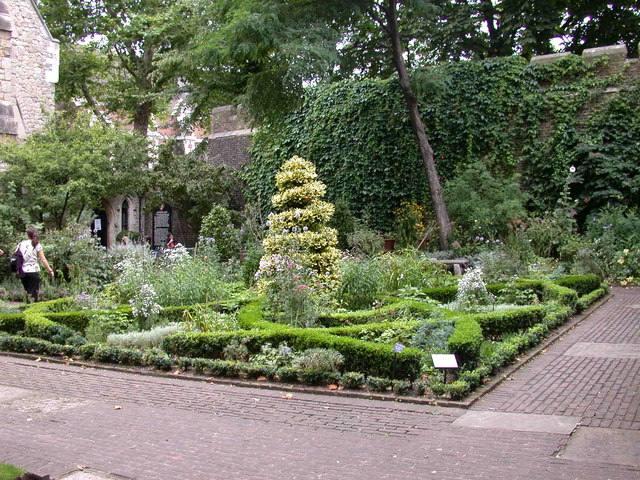Just because you have a small yard doesn’t mean you have to give up the idea of a formal knot garden.
Small yards are always harder to design a garden in because you really need to plan out space and still leave room for growth without crowding. Trying to fit a formal knot garden into a small space requires planning, but it’s not impossible and it might even be easier for some gardeners because it helps you narrow down what you can use and everything has a place.

Knot gardens are generally placed in square or rectangular spaces, so small city plots make the perfect setting and each knot garden while similar, can display a unique knot or design.
If you have a small yard that begs for a garden, consider planting a formal knot garden that will add a lot of flair to any home or apartment building.
Must Read:
Most formal knot gardens are designed within a square or rectangular plot, to determine which shape will work best in the space you have available and create a grid using graph paper. In general, you want to figure your plot out foot by foot and think about your garden from all angles where it might be viewed.
With a small plot, keep the knot simple with a single border of hedges to outline the entire garden so that you can fit in as many complimentary flowers as possible.
The signature of a knot garden is an actual knot created with small, trimmed bushes, so make sure your design includes an intersection at some point. Even something as simple as a giant X encased in the bordering bushes can work.
Before you plant anything it is important that your garden plot is well prepped and tilled because you need to be able to plant in exact spots in order to maintain the look you need.
Remove all growth and debris from the bed, till the soil with a shovel and add a thick layer of topsoil. Use string and stakes to create a grid that will aid in planting your garden according to the plan you have created.
The great thing about garden nurseries is that they are able to provide us with modified plants that are created for their ability to work in different growing environments. If you have a small garden space to work with there are several traditional plants that come in miniature or dwarf versions.
For example, in a traditional formal knot garden, you would use boxwood to create the border and knot form, but you can now buy any one of over a hundred dwarf varieties ranging from very dwarf to the true dwarf. Do some research and determine the maximum size your garden can accommodate to choose the plants that fit into each foot by foot space created on your grid.
Because you are working in a much smaller space there are some things that you can do to make the overall look work better. You have a much larger variety of plants to choose from with a large garden, but you can still pack a punch in the tiniest of plots.
Try to limit your garden to two colors, besides the green foliage created by your boxwood border. Red and yellow, purple and silver, white and red are all great color combos in a garden of this type where you want to grab people’s attention. Select flowers in one color to place in each bordered section of the garden for the greatest visual impact.
Another idea is to include plants that grow vertical, to add height and drama to the garden. With this small size tall and compact is ideal, so ornamental grasses, a single dwarf conifer or a vine that can spread over a teepee-shaped trellis. Clematis, jasmine and trailing roses are all great options that still fall into traditional knot garden flower categories.
Finally, remember to think about what your garden will look like in all four seasons of the year. Plants such as lilies will pop up right away in the spring and vines and ornamental grasses add interest when all the greenery is gone.
A knot garden requires a lot of maintenance to ensure that everything is growing in its place and that the shape is maintained. Luckily, the job can be managed faster because you have a smaller garden size, but you still need to keep hedges trimmed and eliminate any volunteer plants that make their way into your beds. Watch closely for pests or disease which can ruin the entire effect of the knot by eliminating a section of plants that are already established with the rest of the garden plants.